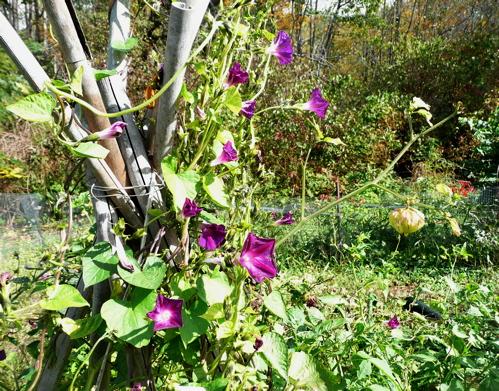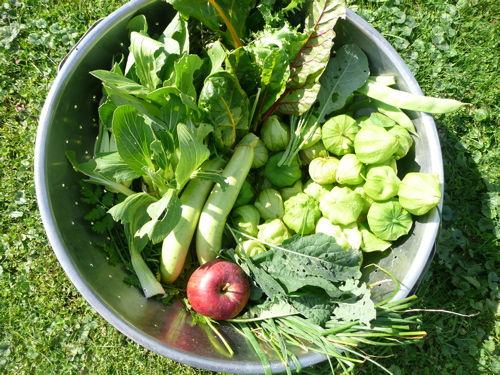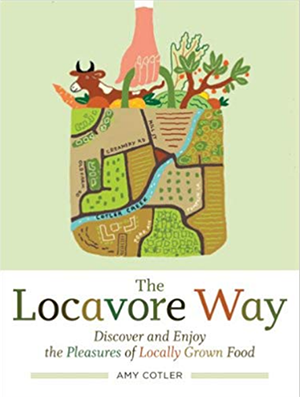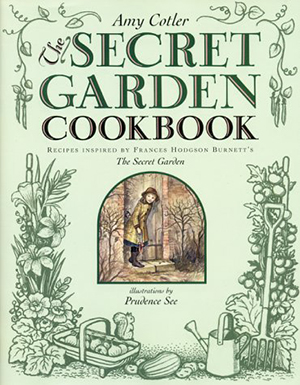A lazy gardener, I begin each spring like a schoolgirl with my pencils sharpened. My raised beds with their mulched companion plants hum with expectation, and they do yield patio salads and pot luck suppers. But, they’re never fully realized as I slack off weeding, watering and nursing the sick for the lure of farm stands and farmers markets.
Now, tramping through my October garden, tomatillos tangle with the purple morning glories I forgot I’d planted, while bok choy fights for space with lettuce gone bitter. Two banana-like eggplants, hang off a plant cleared from its bed, crying, “Cook me you fool.” In the next bed, a chaos of herbs pleads to be blended and stored before the killing frost.
These hidden treasures, along with irregular apples from our unsprayed tree, fill my biggest bowl. Tomorrow, I’ll cook my harvest into salsa and noodles and applesauce.
But now, as the sun goes down, I sit in my chilly kitchen savoring the taste-memory of summer — thick slices of garden Brandywine tomatoes, rainbow chard and Roma beans, picked young but still thick enough to taste meaty and green.
What to make?
Tomatillo Salsa, Eggplant Sandwiches with Sesame Mayonaisse, Salt-Dried Sage, Bok Choy with Noodles, Fresh Apple Sauce and Garlic Wokked Chard. (Wash and dry. Chop if you like, discarding any large thick stems. Heat garlic and fragrant olive oil in a wok. Cook, turning with tongs until wilted. Sprinkle with salt. If you like, add a little fresh lemon juice. Or go Asian with garlic, fresh ginger, soy and sesame oil. Good hot and cold.)
 Tangled Morning Glories and Tomatillos
Tangled Morning Glories and Tomatillos
Looking for Flavor AND Sustainability? Eat Oysters
Last week I wrote a little about the 2010 summit of the Chefs Collaborative, which is a non-profit dedicated to educating chefs about sustainable foods. I worked with the Collaborative a few years back, connecting farmers and restaurants in Montana and Ohio. They’re particularly strong in educating chefs on how to seek out sustainable seafood, not an easy task considering the dwindling supply, high demand and the complex issues at hand. Whether you’re a pro or home cook, their advice is well worth listening to.
My favorite workshop was on oysters, the locavore’s poster child. Not only do oysters clean their surrounding waters, pumping through up to 50 gallons a day, but they taste like the place they inhabit. We tried 4 of the same species grown in 4 different locations — Eastern Massachusetts, Pacific Northwest and from fresh and salt water of New Orleans. Each one had it’s own distinctive flavor. For me, the winner was the the Island Creek, a Duxbury farmed briney oyster, grown reasonably close to my home. Good news and great oysters; I left the workshop happy.
Check out The Geography of oysters, book and website for more.






